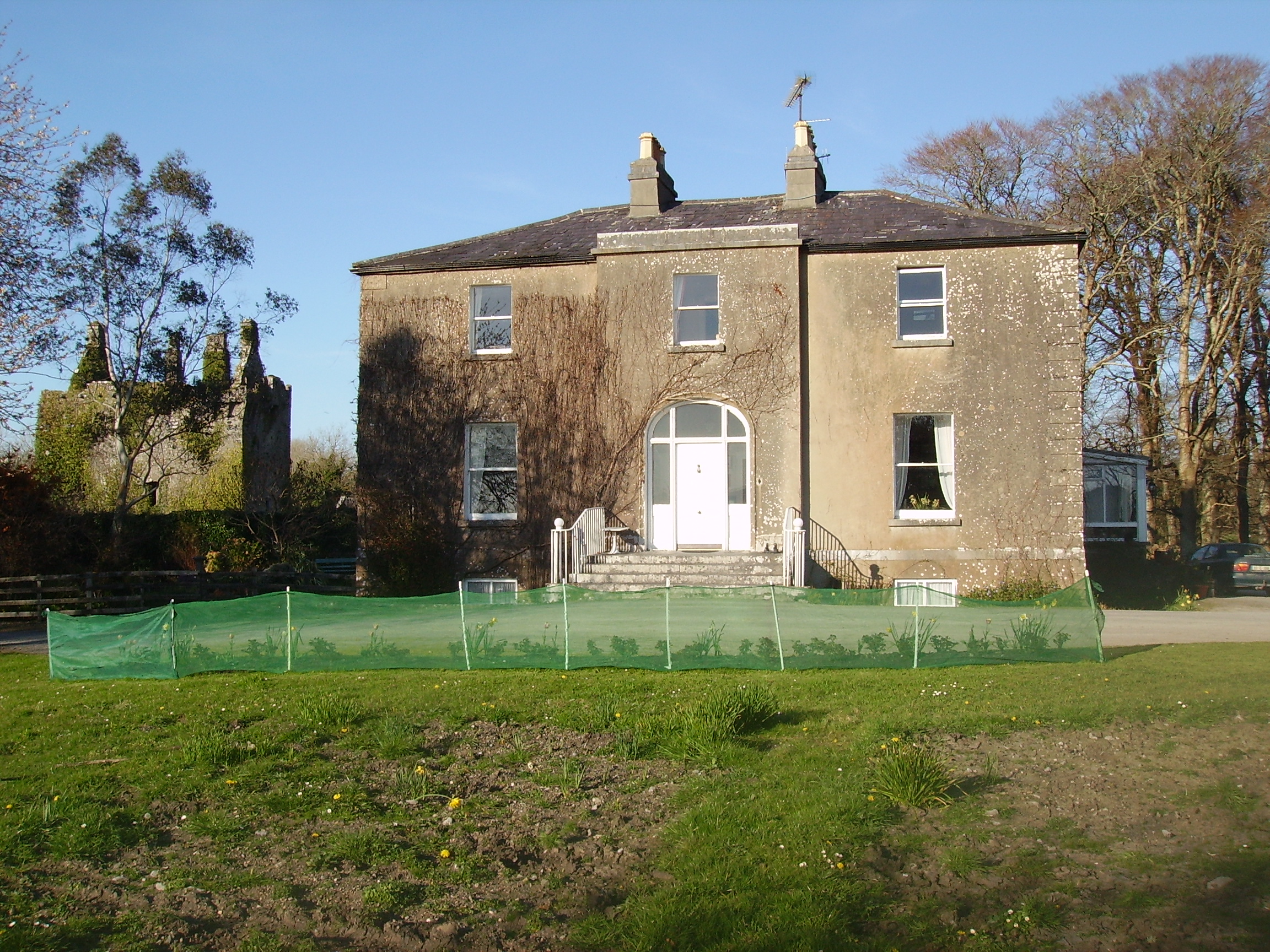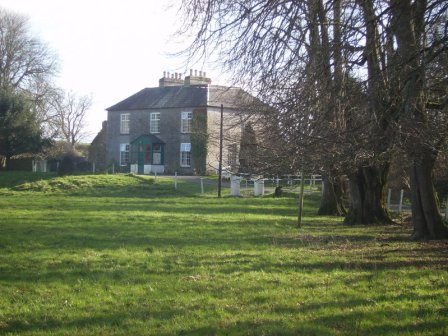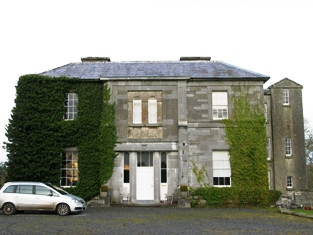Cuslough
Houses within 5km of this house
Displaying 9 houses.
Houses within 5km of Cuslough
Displaying 9 houses.
| House name | Description | |
|---|---|---|
| Creagh | The original house was situated beside the River Robe and was described in September 1836 by Robert Graham as a "nicely laid out cottage residence". Earlier, in 1786, Wilson refers to it as the seat of Mr. Cuff. Mary Louisa Cuffe was leasing the property from Colonel Charles Knox at the time of Griffiths Valuation, when it was valued at £32. A new house was built by Colonel Charles Knox in 1875, which became a tuberculosis sanatorium and a centre for the Agricultural Institute in the 20th century. James Cuff (recorded as Duff), of Creagh, near Ballinrobe, is mentioned as the proprietor of townlands in the parish of Ballynacourty, barony of Dunkellin, county Galway, at the time of the first Ordnance Survey in the 1830s. |

|
| Robe Villa | A town house on the River Robe, home of the Kenny family for 200 years, sold by them in the early 1980s to the Ballinrobe Rugby Club. |

|
| Ballinrobe Castle | A Bourke castle, restored by James Cuffe in 1752 and sold to the War Office in 1821 for use as a military barracks though a barracks existed there in the 18th century as Wilson refers to the town having a barracks with two companies of foot in 1786. The barracks were valued at £75 at the time of Griffith's Valuation. It ceased to be a barracks in the 1920s but substantial ruins of the buildings remain. |

|
| Partry House | Bence-Jones describes the house, situated on the shore of Lough Carra, as Georgian with a Wyatt window above the porch. It is likely that it incorporates an earlier house built in the latter part of the 17th century. In 1786 Wilson mentions "Cloonlagheen" as the seat of Mr. Lynch. It was the seat of the Lynch/Blosse Lynch family for three centuries. At the time of Griffith's Valuation, it was held in fee by Henry Lynch Blosse and valued at £14. Owned briefly by David Shaw Smith in the 1990s, now the home of Lorraine O'Donoghue. |

|
| Lough Mask House | This house was constructed in the early 1840s when Ormsby Elwood was agent to the Earl of Erne. Robert Fair was occupying the house, valued at £10, at the time of Griffith's Valuation and would appear to have taken over as agent to Lord Erne. In the autumn of 1880 Lough Mask House was the scene of the first boycotting incident when Charles Boycott was the agent for the estate. By the mid 1880s Bernard Daly had bought Boycott's lease of the house and farm and his descendants continue to live at Lough Mask. |

|
| Cloonee | A house built circa 1760, sometimes known as Lakeview. It was occupied in the late 1770s by a member of the Browne family and from the early 19th century by the Blakes. Thomas Walsh was the occupier at the time of Griffith's Valuation. He held the property from Colonel Charles Knox. Cloonee was the home of William Creagh Burke in the early 20th century. The "Connaught Telegraph" of 9 March 1935 reported the sudden death of William C. Burke of Lakeview in the Main Street of Ballinrobe when a fair was taking place. The property passed by marriage to the Ruttledge family of Bloomfield. see www.clooneehouse.com/ |

|
| Springvale | Springvale was noted by Lewis as the home of Henry Joseph Blake in 1837. At the time of Griffith's Valuation the house was leased by Henry Blake from Joseph H. Bath and was valued at £8. A substantial corn mill in the townland, valued at £25, was leased by Henry Blake to Patrick Tierney at the same time. The house was later the residence of the Mayne family. It is still extant and occupied. The mill building is also still visible. |

|
| Cranmore | Built in 1838 by Alexander Clendining Lambert on land he held on lease from Colonel Charles Knox. It reverted to the Knoxes after the Famine and was used as a dower house by Colonel Charles Howe Cuff Knox for his mother, a daughter of the 2nd Marquess of Sligo. The house was bought by the Daly family in the 1920s and sold to the McCartans in the late 1940s. They took off the roof in the 1950s and the house is now a ruin. |

|
| Curramore House | Bence Jones dates this house as circa 1830. At the time of Griffith's Valuation it was occupied by Geoffrey Martyn and valued at £20. It was still in the possession of the Martyn family in the mid 1920s. Curramore is still extant and occupied. |

|

